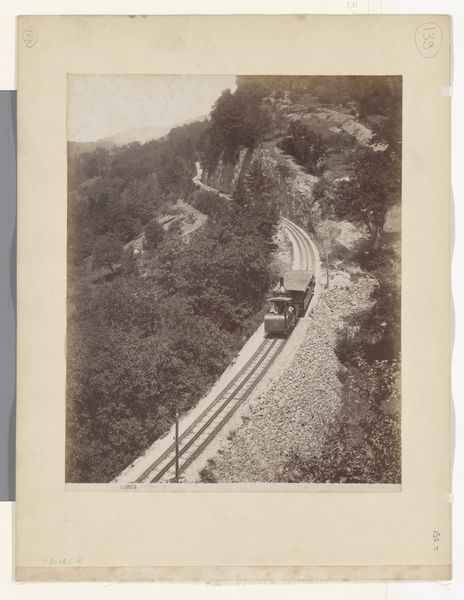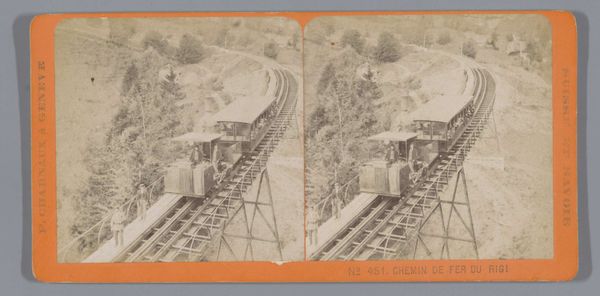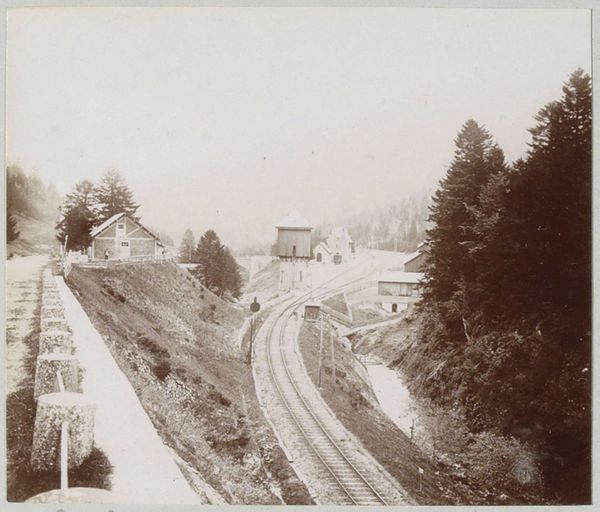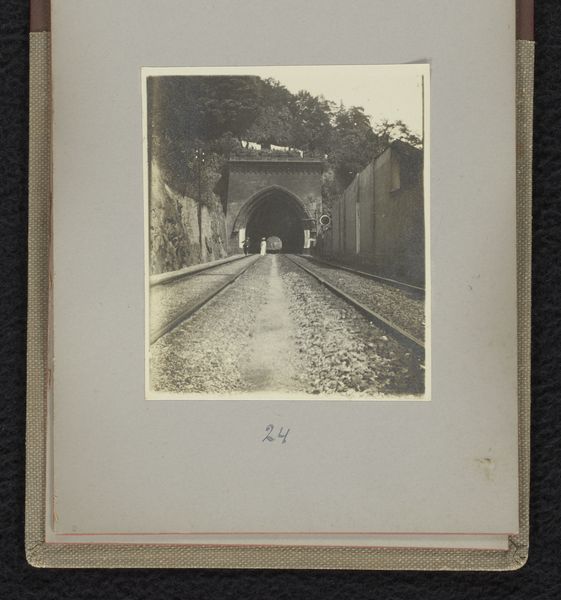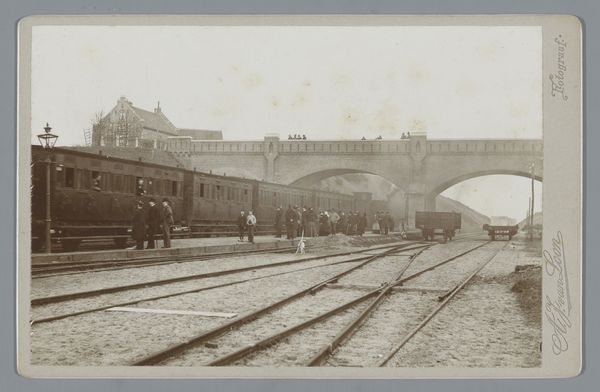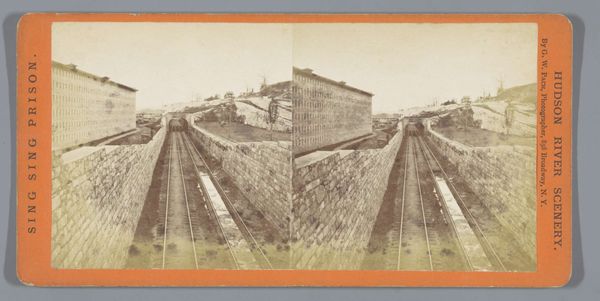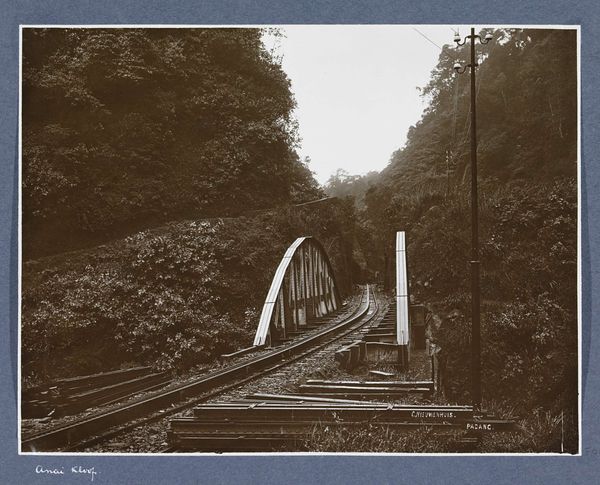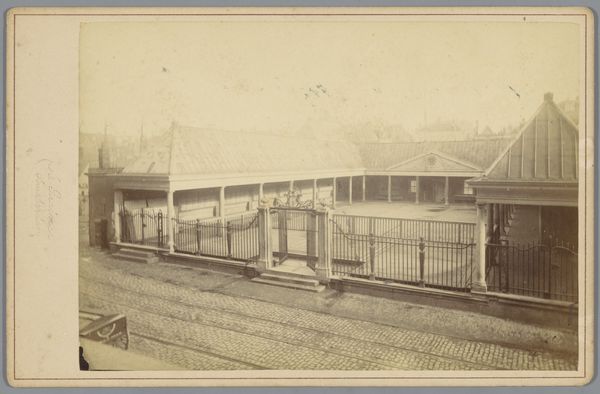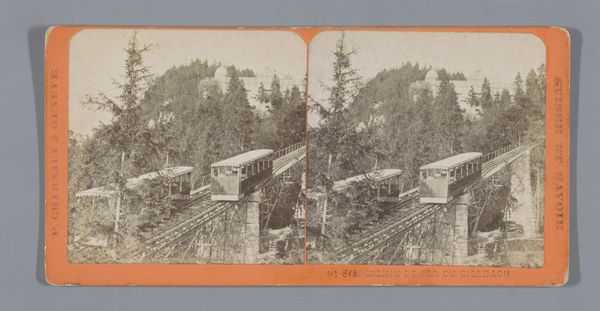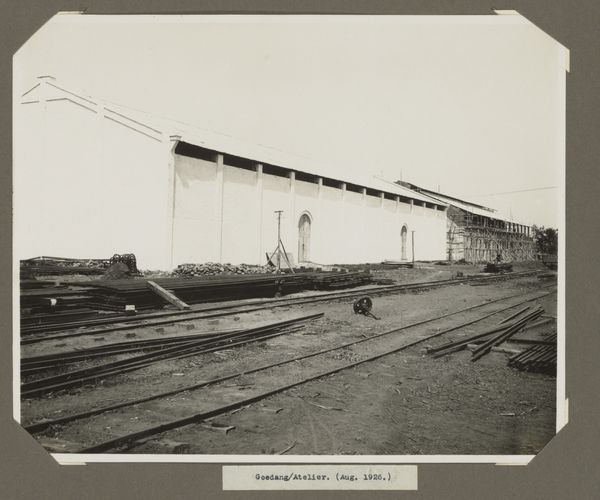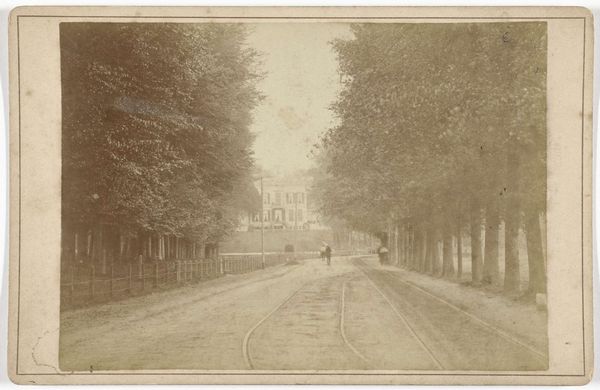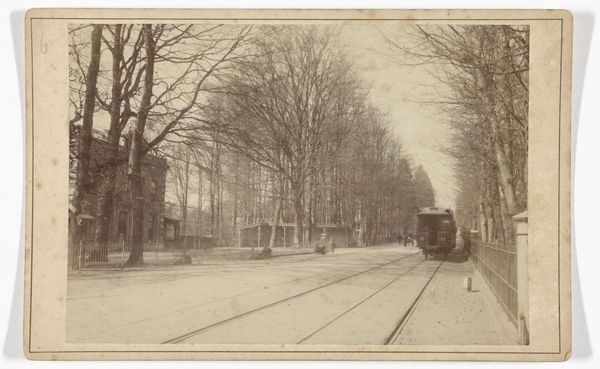
print, photography
#
16_19th-century
# print
#
landscape
#
photography
#
mountain
Dimensions: height 165 mm, width 109 mm
Copyright: Rijks Museum: Open Domain
Editor: This is an albumen print dating between 1864 and 1900, titled "View of the cable car between Bad Ems and the hotel on the Malberg," created by L\u00e9on & L\u00e9vy. It gives me this strong sense of burgeoning modernity against a backdrop of natural grandeur. I wonder, what historical perspectives does this image open up for you? Curator: Well, viewing this through a historical lens, this image embodies a significant shift. We're seeing the democratization of leisure facilitated by new technologies. Prior to these railways, mountainous landscapes like this were only accessible to a privileged few. Does the composition hint at who might be using this service? Editor: Hmm, I'd say the composition is very linear and upward-focused. The gaze is naturally drawn towards the hotel atop the Malberg. Perhaps suggesting aspirations and the rising middle class being able to now access previously elite activities? Curator: Precisely. Consider also how photography itself contributes to this narrative. Photography, rapidly advancing in this period, captures and disseminates these images of progress. Does that suggest anything about intended audiences or propaganda? Editor: That's interesting! The mass production of this photograph and its dissemination could actively shape perceptions of Bad Ems as modern and aspirational...almost advertising its availability. It feels very much connected to place-making through imagery. Curator: Exactly. And in many ways, prefigures our contemporary obsessions with travel photography and social media’s role in shaping tourist destinations. What do you take away from this observation? Editor: It highlights how photography functioned within specific power dynamics, promoting certain narratives around tourism and progress, and how these mechanisms remain potent today. I'm now more aware of the cultural framing that shapes a landscape. Curator: I'm so glad. Paying attention to who makes images, who consumes them, and under what conditions really unlocks fascinating socio-political histories.
Comments
No comments
Be the first to comment and join the conversation on the ultimate creative platform.
